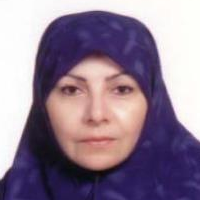
Shohreh Kasaei
Work place: Department of Computer Engineering, Sharif University of Technology Tehran, Iran
E-mail: skasaei@sharif.edu
Website:
Research Interests: Image Processing, Image Compression, Computer Graphics and Visualization, Pattern Recognition, Computer Vision
Biography
Shohreh Kasaei (M'05-SM'07) received her B.Sc. degree from the Department of Electronics, Faculty of Electrical and Computer Engineering, Isfahan University of Technology, Iran, in 1986, her M.Sc. degree from the Graduate School of Engineering, Department of Electrical and Electronic Engineering, University of the Ryukyus, Japan, in 1994, and the Ph.D. degree from Signal Processing Research Centre, School of Electrical and Electronic Systems Engineering, Queensland University of Technology, Australia, in 1998. She joined Sharif University of Technology since 1999, where she is currently a full professor and the director of Image Processing Laboratory (IPL). Her research interests include 3D computer vision, 3D object tracking, human activity recognition, multi-resolution texture analysis, scalable video coding, image retrieval, video indexing, face recognition, hyper spectral change detection, video restoration, and fingerprint authentication.
Author Articles
A Novel Boundary Matching Algorithm for Video Temporal Error Concealment
By Seyed Mojtaba Marvasti-Zadeh Hossein Ghanei-Yakhdan Shohreh Kasaei
DOI: https://doi.org/10.5815/ijigsp.2014.06.01, Pub. Date: 8 May 2014
With the fast growth of communication networks, the video data transmission from these networks is extremely vulnerable. Error concealment is a technique to estimate the damaged data by employing the correctly received data at the decoder. In this paper, an efficient boundary matching algorithm for estimating damaged motion vectors (MVs) is proposed. The proposed algorithm performs error concealment for each damaged macro block (MB) according to the list of identified priority of each frame. It then uses a classic boundary matching criterion or the proposed boundary matching criterion adaptively to identify matching distortion in each boundary of candidate MB. Finally, the candidate MV with minimum distortion is selected as an MV of damaged MB and the list of priorities is updated. Experimental results show that the proposed algorithm improves both objective and subjective qualities of reconstructed frames without any significant increase in computational cost. The PSNR for test sequences in some frames is increased about 4.7, 4.5, and 4.4 dB compared to the classic boundary matching, directional boundary matching, and directional temporal boundary matching algorithm, respectively.
[...] Read more.Other Articles
Subscribe to receive issue release notifications and newsletters from MECS Press journals